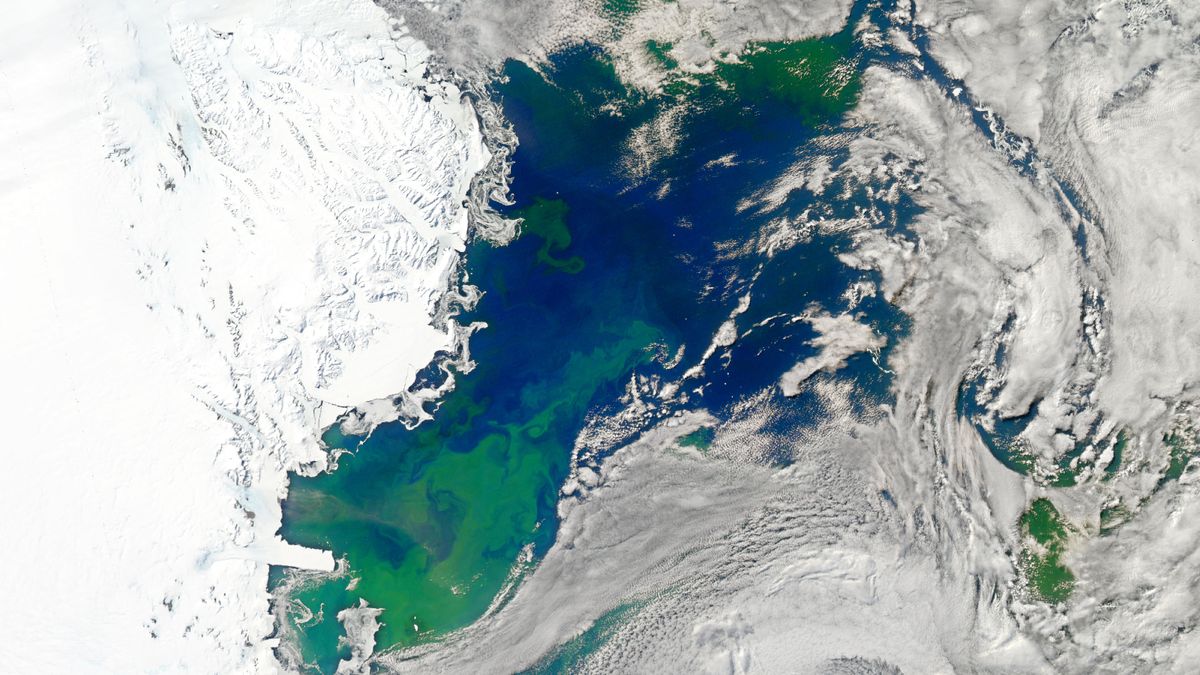Logic-defying 'bottom blooms' could sustain hidden ecosystems in Arctic and Antarctica
By Harry Baker published 5 days ago
A pair of new studies has revealed 'highly unlikely' phytoplankton blooms appearing near the seafloor and under sea ice at both Earth's poles.

A surface phytoplankton bloom in the Ross Sea in Antarctica captured by NASA's Aqua satellite on Jan. 11 2011. New research suggests blooms like this may also exist further beneath the surface in both of Earth's polar regions.A surface phytoplankton bloom in the Ross Sea in Antarctica captured by NASA's Aqua satellite on Jan. 11 2011. New research suggests blooms like this may also exist further beneath the surface in both of Earth's polar regions. (Image credit: NASA Earth Observatory/Norman Kuring,/Goddard Space Flight Center)
Logic-defying phytoplankton blooms have been discovered lurking beneath the ocean's surface in both of Earth's polar regions, two unrelated new studies have revealed. The highly unlikely "bottom blooms," which grow near the seafloor in the Arctic and below sea ice in Antarctica, could support hidden ecosystems that scientists know nothing about.
Phytoplankton are tiny photosynthetic algae that account for around half of the primary production — the conversion of sunlight to organically available energy — in Earth's oceans and help to prop up the marine food web. Phytoplankton blooms, which are often visible from space as beautiful green swirls on the ocean's surface, occur when the algae rapidly reproduce due to an overabundance of available nutrients. However, phytoplankton also require sunlight, which limits blooms to the upper layer of the ocean, where sunlight is strongest.
The Arctic and Antarctica are home to some of the most nutrient-rich waters in the world and support massive phytoplankton blooms during their respective summer months, when sea ice is at its minimum extent and sunlight can reach more of the ocean's surface. But as sea ice builds up in the wintertime, the blooms lose access to sunlight and start to die.
However, a pair of new studies published by two different research teams has revealed that some of these blooms are either surviving in deeper waters after the sea ice thickens, as is the case in the Arctic, or starting to bloom beneath the sea ice before it begins its seasonal melt, as seen in Antarctica.
More:
https://www.livescience.com/subsurface-polar-phytoplankton-blooms
